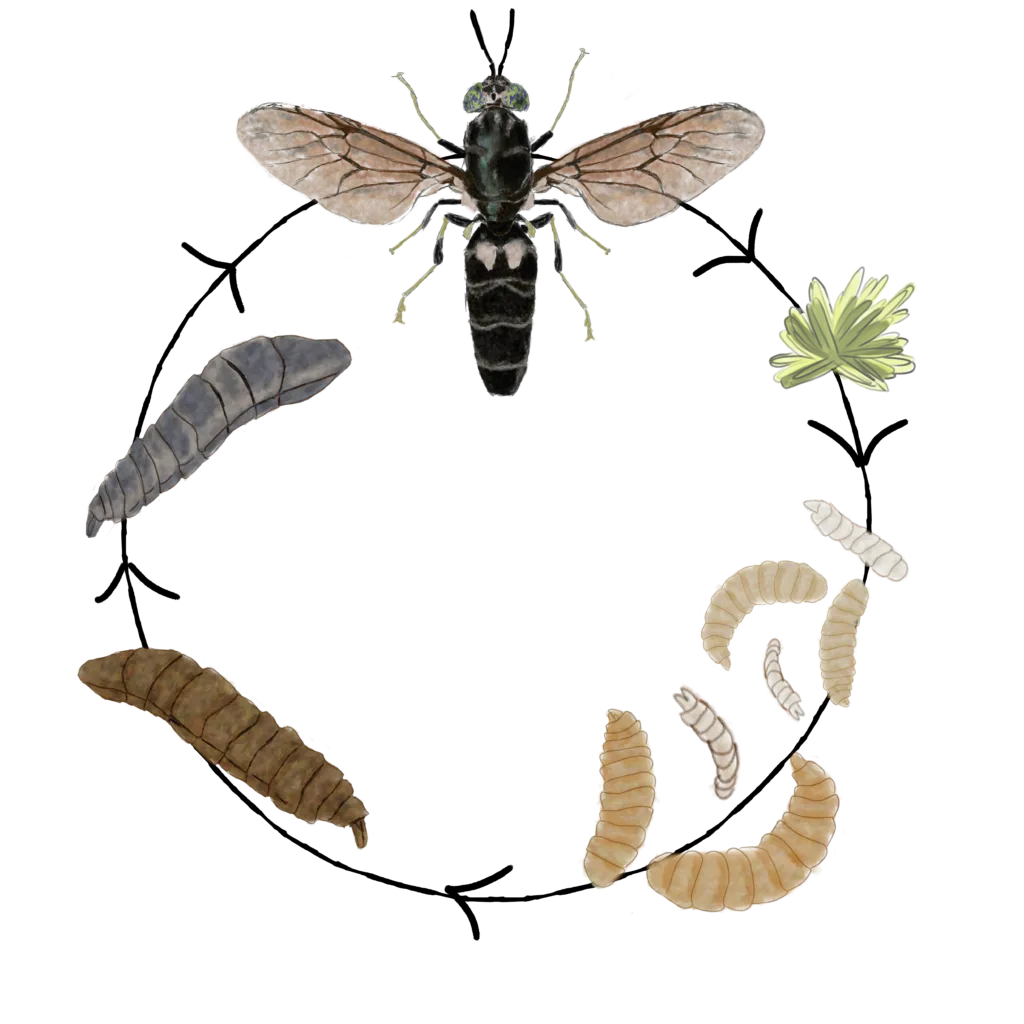
Why Aren’t We Feeding Chickens Bugs?
Quick Recap for Busy Chicken Peeps
Chickens thrive on bugs & seeds...not "kibble"
My first “maggot bucket” made a friend gag
Black soldier fly larvae = protein-packed gold nuggets
DIY bin setup costs less than $20
Stronger shells, richer yolks, and lower feed bills
From Maggot Bucket to Soldier Fly Farm
Most people don’t realize this: chickens were designed to eat bugs and seeds. Not pellets, not powder...bugs. So why aren’t we feeding them insect-based protein?
I still laugh thinking about the first time I tried to feed bugs to my flock. I told a buddy, “Hey, I want your rotten fruit and meat…” She gave me that what-the-heck look. Then I added, “So I can use it to make a maggot bucket for my chickens.”
She nearly threw up in her mouth when I said the word maggot.
My first maggot bucket was rough. Just an old sprout bucket experiment gone wrong, drilled with holes way too big. I stuffed it with carcasses, slapped on a lid, and crossed my fingers. I’d heard old-timers swear their grandmas never bought chicken feed, yet still had fat birds and full egg baskets. That became my mission: figure out how to never buy feed again.
Broke, Hungry, and Thinking Different
Back when Blooming Health Farms was finding its wings (literally), I quit my job (pro tip: don’t do this without a plan) and had to budget hard. That meant hitting the food bank. Some days I’d walk away with potted chicken, ground beef in a can, powdered milk, lentils...whatever they had that I could eat.
And as far as my flock? Sure, I could’ve gone to Tractor Supply and bought the cheap stuff. But every time I opened a bag of Producer’s Pride, the smell made me gag. I remember thinking, “If my birds eat this every day, it’s no different than me eating food bank food or raising kids on soda and fast food.”
Then one day, an article grabbed me by the collar:
“Want an easy (and free) way to feed your hens?”
You better believe I said, “Hell yeah!”
That’s when I met the larvae of the black soldier fly.
Protein Bombs Hiding in Plain Sight
Black soldier fly larvae aren’t just bugs. They’re nutrient bombs—50% protein, loaded with calcium, fat, and energy. Protein fuels feathers and eggs. Calcium stacks shells. Those wriggling little grubs are like free gold nuggets, waiting to be mined.
And here’s the kicker: you don’t have to buy them. You can farm them yourself, Chicken pimp-style.
The DIY Soldier Fly Farm

We built our first setup in less than a few hours for under $25. Scrap wood and an old 55-gal barrel and some leftover fasteners. You may have to get some materials depending....
Here’s the blueprint:
Materials
55-gal drum (light color preferred)
60 ft 2x4, 115 ft 1x4
100 3" screws, 40 1.5" screws
6 ft chain, 1 pair hinges
1" PVC Tee, 1" male adapter, 1" ball valve
Waterproof caulk
Tools
Drill, table saw, circular saw, ½" drill bit
Tape measure, pencil, safety goggles
Lumber Cuts

Build Steps
Cut Drum:Lay barrel on side and cut lengthwise into two halves.
Build Frames:Use 38" and 23" 2x4s to make two rectangular frames. Secure each barrel half inside using 1.5" screws (28 total).
Install Tee: In the lid half, drill a ½" hole and attach the 1" Tee PVC joint with adapter. This allows adult flies to enter.
Build Legs:Pair one 30.5" plank with one 18.5" to form a leg; repeat four times. Add 12" pieces 4" below each top. Connect two legs with a 26" crossbar to make H-shaped bases.
Assemble Base:Join both H-legs with two 38" planks. Add drain holes or ball valve to bottom barrel half. Secure barrel frame to base.
Add Edge Boards: Line bin edge with 1x4s; leave gap for larval ramp.
Attach Lid: Mount top barrel frame with hinges. Add chain to support lid when open. Install handle on front.
Final Touches: Build a simple ramp for larvae to exit. Ensure good drainage and use caulk or roof cover if exposed to rain.
Optional: Add shelves on bin side for larval collection.

Maintenance:
Add scraps regularly, but keep it balanced. Too wet = stink and houseflies. Too dry = no food. Stick to grains, fruit, and veg.
Harvest:
In 4–7 days, they’ll be fat and an inch long. And here’s the beauty...they crawl themselves into your smaller bin, ready to scoop. Feed fresh, or freeze/dry for later.
Set It and Forget It
This is one of those hustles that feels like cheating. You turn scraps into protein, hens into egg machines, and feed bills into pocket change. The birds go wild for them.
That’s Chicken Pimpin’...making scraps work harder than store-bought feed ever will.
ref: Purdue Extension: BLACK SOLDIER FLY COMPOSTING GUIDE
https://extension.entm.purdue.edu/publications/E-276/E-276.html
